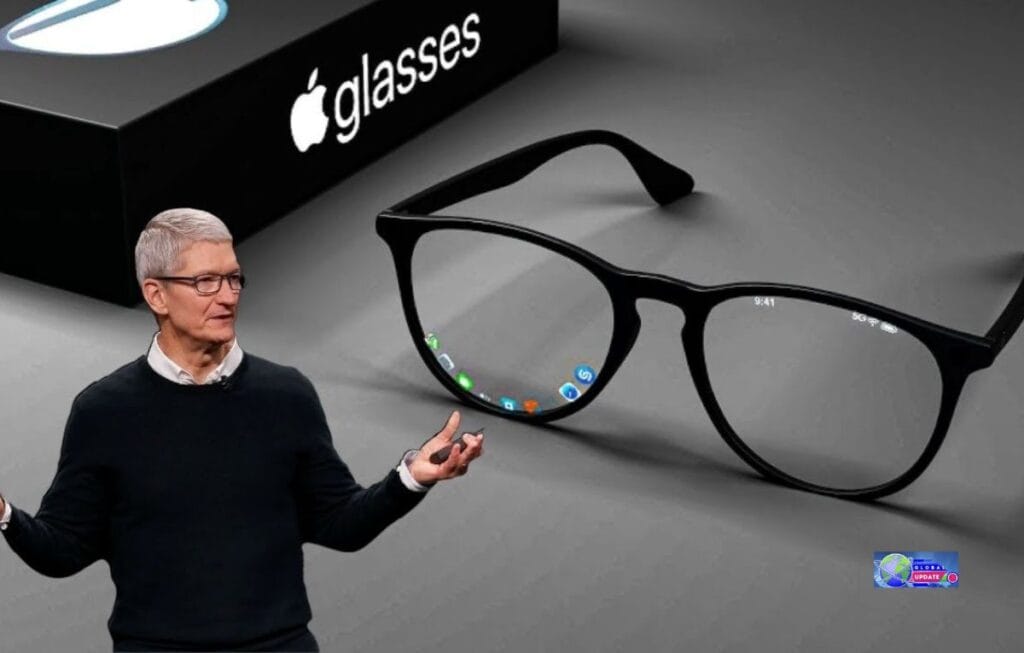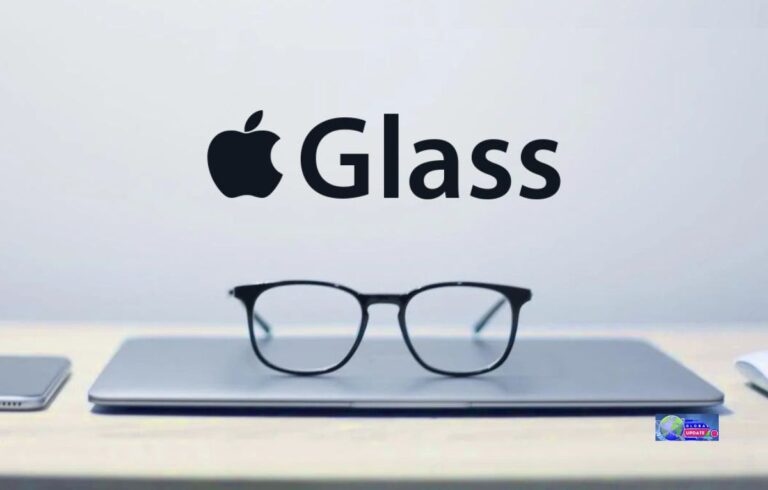In what promises to be one of the most transformative tech launches in recent memory, Apple is reportedly preparing to unveil its much-anticipated Smart Glasses in 2026.
After years of speculation, prototypes, and persistent leaks, the Cupertino-based tech giant seems ready to expand its product lineup into wearable augmented reality (AR).
These smart glasses, rumoured to be named “Apple Vision Glasses” or “Apple Glass,” are expected to reshape how we interact with digital content, bridging the gap between our physical and virtual lives like never before.
As Apple positions itself for the post-smartphone era, its Smart Glasses are more than just another gadget—they represent an evolution of personal technology. Here’s an in-depth look into everything we know and expect from Apple’s AR glasses ahead of their 2026 debut.
A Very Long Time in the Making
It has been a protracted trip to Apple’s Smart Glasses. Rumors of Apple’s interest in AR date back to at least 2015, with the company quietly acquiring AR-focused startups such as Metaio and Vrvana.
Then came the release of ARKit in 2017, a tool allowing creators of AR experiences for iPhones and iPads to use.
These moves signaled that Apple wasn’t just dabbling in AR but laying the groundwork for something bigger.
In 2023, Apple released the Vision Pro headset—a premium mixed-reality device that combined virtual reality (VR) with advanced AR capabilities.
Although expensive and targeted at developers and early adopters, the Vision Pro proved Apple could engineer a sophisticated spatial computing device.
Now, smart glasses are expected to take that technology and make it more wearable, compact, and consumer-friendly.
Design: Sleek, Stylish, and Apple-Polished
If there’s one thing Apple never compromises on, it’s design. Early leaks and concept images suggest that Apple Smart Glasses will look like regular eyeglasses with a minimalist aesthetic.
Unlike bulky AR headsets, these glasses will prioritize subtlety and style. They will probably arrive in various frames to suit different style preferences.
Materials like lightweight aluminum, composite polymers, and scratch-resistant glass are expected.
Given Apple’s history of collaborating with luxury eyewear brands, the glasses could be co-designed with fashion giants such as Ray-Ban or Luxottica.
The goal? The goal is to make wearing Apple Smart Glasses as natural and socially acceptable as traditional prescription glasses.
Display Technology: Augmented Reality in Your Line of Sight
Apple’s Smart Glasses will reportedly use advanced micro-OLED displays, enabling ultra-crisp visuals that appear seamlessly over the real world.
These transparent displays will overlay digital information, such as navigation directions, messages, notifications, and contextual data, directly into the wearer’s field of vision.
Rumors also suggest that Apple is experimenting with a “projected retina display”, which could beam images directly onto the retina using low-powered lasers. While the idea may sound futuristic, it would eliminate the need for large lenses and help conserve battery life.
Additionally, eye-tracking sensors could help the device adjust focal length in real time, making the visuals sharper and more responsive. With this technology, users could interact with digital objects only by staring at them.
User Interface: Meet the Next Generation of Apple’s UI
The Smart Glasses are expected to run on a new operating system, possibly called glassOS, adapted from visionOS (used in the Vision Pro) and iOS. This new platform will likely offer seamless integration with the Apple ecosystem, allowing the glasses to communicate with iPhones, Apple Watches, AirPods, and Macs.
Instead of relying on physical buttons, users will navigate through gaze control, voice commands via Siri, subtle head movements, and hand gestures.
Apple may also introduce a tiny ring or wrist-worn device (like a smaller version of the Apple Watch) to provide tactile input and haptic feedback.
Imagine looking at a restaurant and seeing its Yelp rating immediately, or strolling down the street and seeing turn-by-turn directions hanging before you.
Apple Smart Glasses will bring these capabilities to life intuitively and immersively.
Features: Everyday Utility with a Touch of Magic
Apple has a reputation for creating immediately useful devices, and its Smart Glasses are no different. Here’s a look at some features likely to be included:
1. Live Translations
With built-in microphones and speakers (or integration with AirPods), the glasses could offer real-time translation of spoken languages. Subtitles might appear beneath the speaker’s face, breaking global communication barriers.
2. Navigation
Using AR overlays and Apple Maps, users will see real-time navigation guidance—arrows, street names, and landmarks—projected in their line of sight. Directions, whether walking, cycling, or driving, will be hands-free and visually intuitive.
3. Facial Recognition and Contact Cards
Leveraging facial recognition (with privacy considerations), the glasses might identify known contacts and display key information, like their name, job title, or recent messages.
4. Notifications and Calls
Text messages, calendar reminders, and phone calls can be managed without looking down at your iPhone. A discreet visual cue will alert you; a simple blink or voice command can accept or dismiss.
5. AR Gaming and Entertainment
Expect a new generation of AR games and experiences built specifically for the glasses. Developers will have access to Apple’s ARKit, enabling apps where digital characters interact with your real environment.
Privacy and Ethics: Apple’s Focus on Responsible Innovation
As AR devices become more integrated into daily life, concerns about surveillance, data collection, and public privacy inevitably arise.
Apple has long established itself as a privacy-first business. Therefore, the smart glasses must maintain Apple’s privacy-first image.
To address these concerns, Apple may implement LED indicators that light up when the camera is recording, similar to how laptop webcams operate. Voice data and facial recognition features would likely be processed on the device, minimising cloud dependence and enhancing user control.
Apple will also likely provide users with comprehensive privacy settings, including transparency on what data is collected, how it’s stored, and the ability to opt out of features.
Battery Life and Charging
Battery life remains a significant hurdle for AR glasses. Apple is reportedly developing efficient custom chips—possibly an ultralow-power version of M-series silicon—to optimise performance without draining the battery.
Depending on use, battery life is supposed to last 12 hours per charge.
Charging may occur via a magnetic contact on the glasses’ temple or a compact wireless charging case, like AirPods.
Health, Accessibility, and Prescription Lenses
Apple has consistently prioritized accessibility across its devices, and the Smart Glasses will be no different. For users with vision impairments, the glasses could include features such as audio descriptions, voice-guided navigation, and adjustable contrast modes.
Additionally, Apple will likely partner with optometrists or eyeglass retailers to offer prescription lens options. A modular design could allow users to swap out lenses or integrate them during the ordering process.
Price and Availability
While Apple has not officially confirmed the release date, insiders suggest a 2026 launch, possibly during the company’s traditional September keynote event.
Like the original iPhone and Apple Watch, the initial release might only be available in a few markets and countries before gradually expanding worldwide.
Pricing is still under speculation, but industry experts believe the base model could start around $1,500 to $2,000, making it more affordable than the $3,499 Vision Pro headset. Additional costs for prescription lenses, accessories, and premium designs may apply.
Competitors in the Market
Apple won’t be alone in the AR glasses space. Meta (formerly Facebook) has been working on AR glasses with Ray-Ban, while Google, Samsung, and Microsoft have also shown interest. However, Apple’s strength lies in its vertically integrated ecosystem and unmatched brand loyalty.
Much like the iPhone redefined smartphones and the Apple Watch reshaped wearables, the Smart Glasses have the potential to outpace competitors by focusing on usability, ecosystem integration, and premium hardware.

A New Era of Spatial Computing
Apple’s Smart Glasses dawned a new computing paradigm: spatial computing. This technology allows digital content to interact with the real world in three dimensions, unlocking experiences previously confined to science fiction.
With Apple at the helm, spatial computing could go mainstream, altering industries from education and healthcare to design and communication.
Like the original iPhone and Apple Watch, the initial release might only be available in a few markets and countries before gradually expanding worldwide. It will be compatible with holographic colleagues in real time.
Final Thoughts
Apple Smart Glasses’ 2026 introduction might be the next major personal technological breakthrough.
As smartphones plateau and the hunger for immersive experiences grows, Apple is poised to redefine our relationship with digital content.
By blending elegant design with groundbreaking AR capabilities, these glasses may become as essential as the iPhone, offering a tool for productivity and a gateway to a smarter, more connected world.
The transformative potential of Apple Smart Glasses remains uncertain. However, one certainty remains: the future is not merely within our grasp but unfolding before us.



